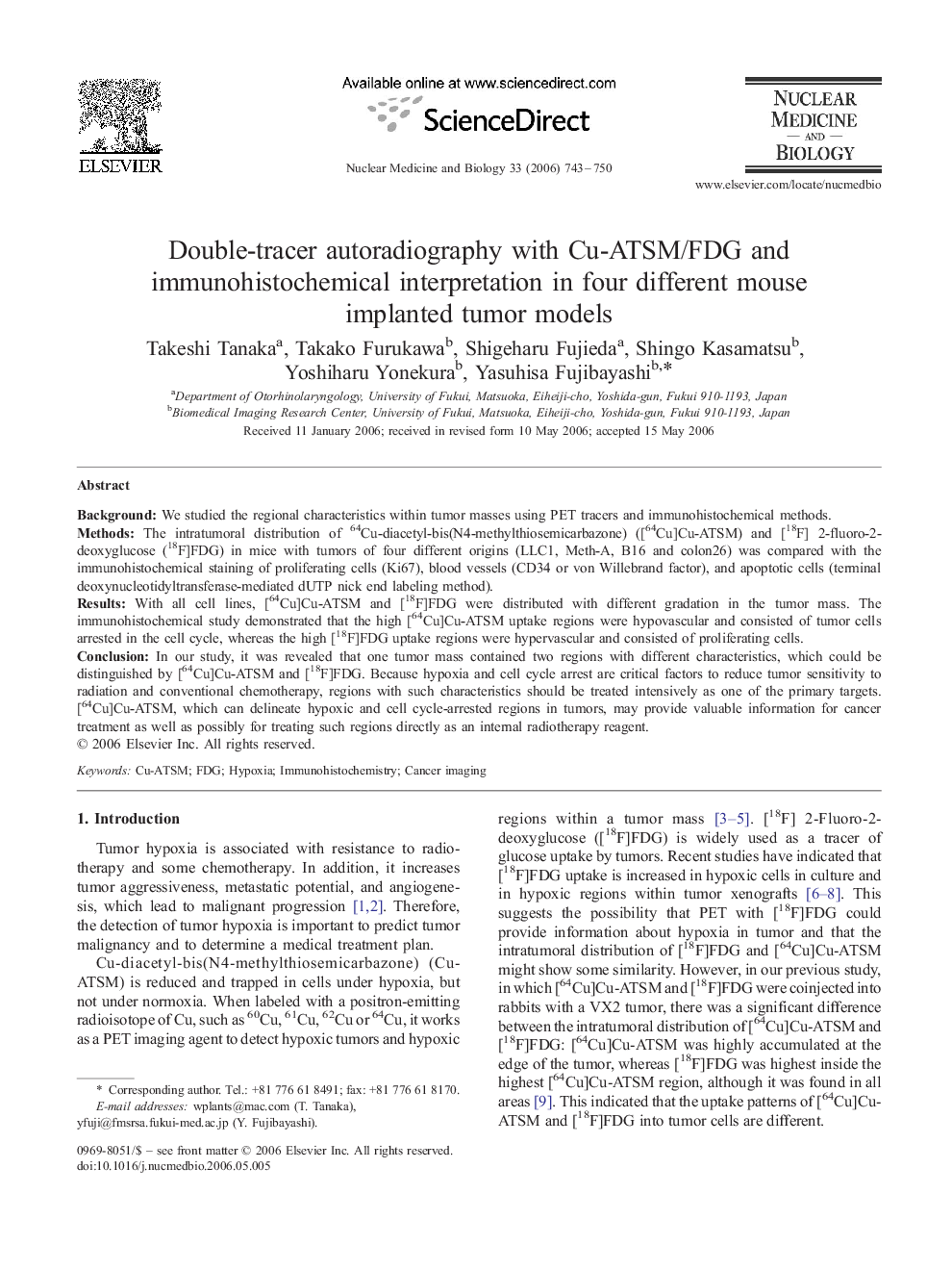| Article ID | Journal | Published Year | Pages | File Type |
|---|---|---|---|---|
| 2154796 | Nuclear Medicine and Biology | 2006 | 8 Pages |
BackgroundWe studied the regional characteristics within tumor masses using PET tracers and immunohistochemical methods.MethodsThe intratumoral distribution of 64Cu-diacetyl-bis(N4-methylthiosemicarbazone) ([64Cu]Cu-ATSM) and [18F] 2-fluoro-2-deoxyglucose (18F]FDG) in mice with tumors of four different origins (LLC1, Meth-A, B16 and colon26) was compared with the immunohistochemical staining of proliferating cells (Ki67), blood vessels (CD34 or von Willebrand factor), and apoptotic cells (terminal deoxynucleotidyltransferase-mediated dUTP nick end labeling method).ResultsWith all cell lines, [64Cu]Cu-ATSM and [18F]FDG were distributed with different gradation in the tumor mass. The immunohistochemical study demonstrated that the high [64Cu]Cu-ATSM uptake regions were hypovascular and consisted of tumor cells arrested in the cell cycle, whereas the high [18F]FDG uptake regions were hypervascular and consisted of proliferating cells.ConclusionIn our study, it was revealed that one tumor mass contained two regions with different characteristics, which could be distinguished by [64Cu]Cu-ATSM and [18F]FDG. Because hypoxia and cell cycle arrest are critical factors to reduce tumor sensitivity to radiation and conventional chemotherapy, regions with such characteristics should be treated intensively as one of the primary targets. [64Cu]Cu-ATSM, which can delineate hypoxic and cell cycle-arrested regions in tumors, may provide valuable information for cancer treatment as well as possibly for treating such regions directly as an internal radiotherapy reagent.
